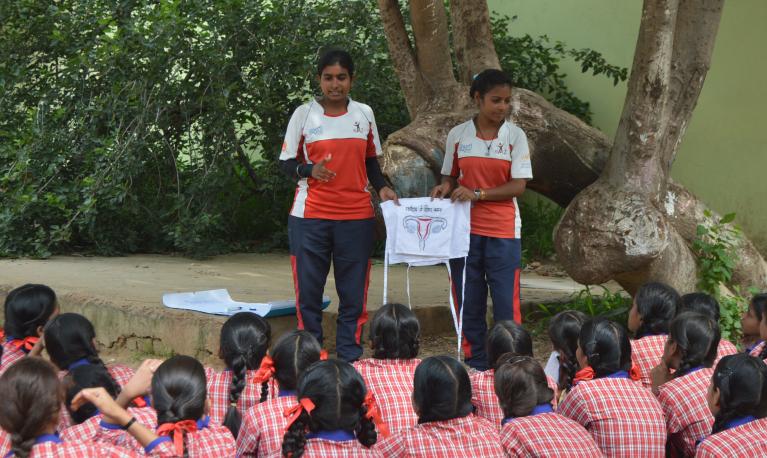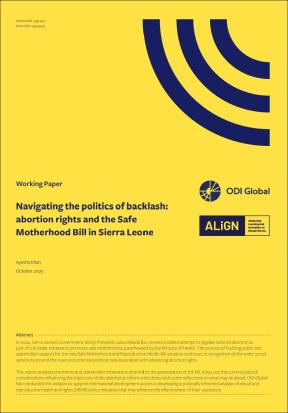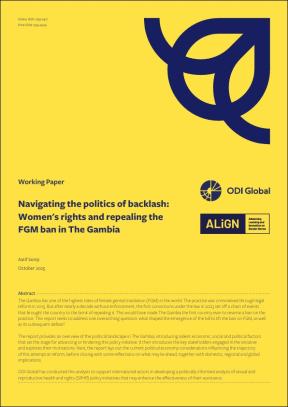In this guide
Hide menu7. Sexual and reproductive health and gender norms
Show sections7. Sexual and reproductive health and gender norms
The role of gender norms in sexual and reproductive health has long been recognised in research. There has been a focus on adolescent girls and young women who bear the brunt of inadequate policy and programming, particularly where persistent gender inequality denies them the right to understand and control their bodies and their life choices.
With the onset of puberty, girls and boys often have to follow different norms about ‘acceptable’ engagement in intimate and sexual relationships. Known as the sexual double standard, these norms expect girls to show modesty and maintain their purity, while boys are encouraged to engage in sexual activity to live up to masculine ideals.
Adolescent sexuality and sexual activity outside marriage remain taboo issues in many countries. While adolescents have the right to access information and use quality services, laws may still require parental consent and adolescent sexual and reproductive health may be a low policy priority. Parents, teachers, faith leaders and health workers are often uncomfortable about discussing such issues, assuming that talking about sex only encourages it. ALIGN’s annotated bibliography on gender norms and youth-friendly services summarises evidence on barriers and effective approaches to promoting gender-equitable norms among service providers. ALIGN-funded research from Indonesia also explores how gender norms affect young people’s access to SRH services.
A growing body of literature on adolescent sexual and reproductive health has identified limited access to sexual education, lack of youth-friendly services and traditional norms about sexuality and procreation as key barriers to adolescent sexual and reproductive health. Adolescents report their own reluctance to access sexual and reproductive health services and often engage in sexual activity without understanding the risks involved. Those belonging to sexual minorities face even greater difficulties, especially where same-sex sexual activity is criminalised.
Available data paint an alarming picture: more than 18 million adolescent girls give birth every year in LMICs and complications in pregnancy and childbirth are a leading cause of their mortality. Twenty million girls aged 15-19 in LMICs have an unmet need for modern contraception. Nearly half of pregnancies among this age group are unintended and some 3.9 million girls have unsafe abortions. Girls are also highly vulnerable to STIs and HIV: in 2017, they accounted for two thirds of all new HIV infections among adolescents. In sub-Saharan Africa they were three times more likely to be infected than boys.
Norms about feminine behaviours
Studies confirm that the sexual activity of girls is particularly condemned where they are expected to refrain from sexual activity until marriage. Girls who have premarital sex may encounter judgemental attitudes or mistreatment from health providers and face social stigma for being immoral and dishonouring their families. Girls report facing stigma from health providers more frequently than young men. Those who appear to know too much or act in a sexual way can ruin their own reputation, be labelled as ‘bad girls’, and face harassment.
To avoid such risks, girls may have to cover up their changing bodies when they reach puberty. Their movements may be constrained, their social interactions monitored to maintain family honour, and they may be married off at an early age to ensure their purity.
Married girls are often expected to start childbearing and have limited control over family planning. Communication with a partner is important: young women who cannot communicate with their husbands are less likely to use contraception or more likely to conceal its use. Data from 45 countries, mostly in sub-Saharan Africa, show that only 52% of women of reproductive age who are married or in a union make their own decisions about sexual relations or contraceptive use.
Obedience and submission to male authority are two typical features of traditional femininity. Studies have shown that in settings characterised by unequal gender relations, girls have limited ability to negotiate condom use as they may be seen as unfaithful or promiscuous, or face partner violence and sexual coercion that increase their vulnerability to unwanted pregnancies, STIs and HIV. One study in Botswana and Eswatini found that women’s greater adherence to unequal gender norms was associated with limited control over their own sexual health and their sexual activity with much older men.
Young women who are economically dependent on much older partners find it more difficult to negotiate safe sex practices. Evidence from Southern Africa shows that women with partners who are ten or more years older than them, who are abused and who depend on their partners are less likely to suggest condom use. Similarly, survey data from 24 countries in sub-Saharan Africa show that rates of condom use are very low during high-risk sex by women in the lowest wealth quintile and those without formal education. In contrast, research in urban India found a significant and positive link between gender-equitable attitudes among men and contraceptive use.
Fear, limited knowledge, lack of resources or services and discriminatory laws often prompt girls and women to resort to informal practitioners and dangerous practices to end a pregnancy or deal with a sexual problem. The relationship between pregnancy and access to safe abortion is also shaped by gender norms, as noted in an ALIGN-commissioned annotated bibliography that explores various aspects of this topic and identifies existing evidence gaps.
Norms about masculine behaviours
Adolescent boys are also affected by rigid gender norms and masculine ideals. The pressure to take sexual risks, have many heterosexual partners, engage in sexual intercourse as proof of manhood and avoid health care, all leave boys vulnerable to sexual risks and infections, and contribute to poor sexual and reproductive health outcomes.
According to such ideals, sexual intercourse is an affirmation of masculine power that rejects intimacy and emotional bonding as feminine qualities. Boys are often socialised to the idea that their sexual drive is uncontrollable and must be satisfied through the conquest and submission of girls, legitimising forced sexual intercourse. The pressure to take risks also prompts men to reject safe sex, including condom use. Research in Ethiopia has concluded that unmarried adolescent boys and young men with friends who have used condoms are more likely to use condoms themselves.
Boys often feel pressured to live up to peer expectations and display virility to avoid ridicule, including homophobic taunts. Meanwhile, boys who do not align themselves with aggressive heterosexual norms face greater sanctions than girls with alternative sexual identities.
Similarly, communication with partners is not seen as appropriate for ‘real men’. Studies have shown that greater adherence to gender-inequitable norms is associated with greater male control of sexual decision-making, perpetration of rape, unprotected sex and multiple sex partners.
Adolescent boys may think they should appear to know everything and be reluctant to seek information or help, even though they may lack any knowledge about sexual health. Gender norms may also deter them from seeking medical assistance such as STI testing and treatment, with greater adherence to gender-inequitable norms linked to lower levels of HIV testing.
Related resources

View more resources related to gender norms and sexual and reproductive health
Briefing paper
24 November 2025

Briefing paper
5 November 2025
